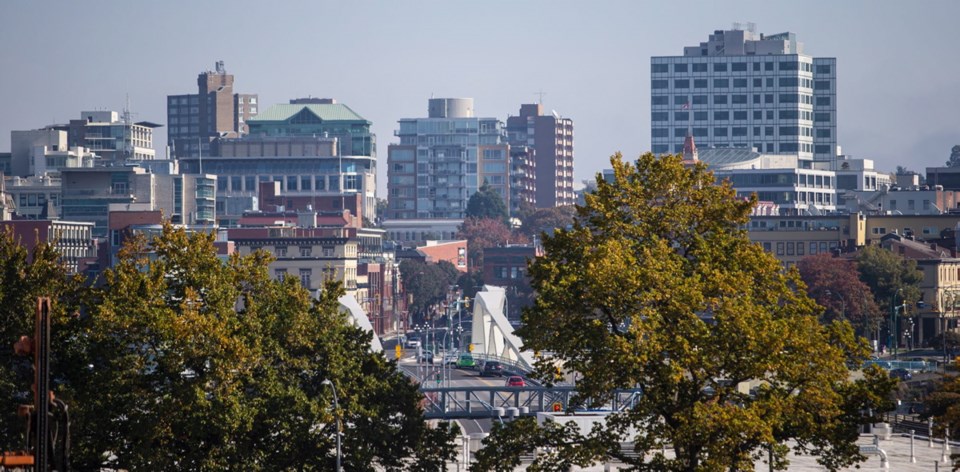Vandals have stepped up their “tagging” attacks on downtown heritage buildings this year, causing thousands of dollars in damage and forcing the city to shell out more money for cleanup.
Councillors approved a $20,000 grant to the Downtown Victoria Business Association this week to help it stay on top of the problem.
Jeff Bray, executive director, said the association has noticed an increase in the number of incidents of people spray-painting their “tags” on private property across the city.
The association’s “clean team” removed about 6,500 tags in 2017, only to see that number jump to 10,500 in 2018.
Bray said the team has already surpassed that mark this year.
“It’s a handful of individuals, but they tag absolutely everything,” he said.
“It’s not art. It’s vandalism.”
Of increasing concern is the targeting of heritage buildings and the elaborate lengths that taggers will go to leave their marks near the tops of facades or along roof lines. The walls in Waddington Alley and the top of the Rialto Hotel have been recent targets.
“They’re taking risks, which is certainly one thing, but then whoever is removing [the tag] is putting themselves at risk having to do the same thing,” Bray said.
“For them it’s fun and games and giggles, but for everybody else it’s an expense and it’s a hazard and it’s a safety risk.”
In the case of heritage buildings, the cleanup requires extra time and specialized equipment so as to minimize damage to historic features such as exposed brick and wood, Coun. Charlayne Thornton-Joe said.
“It’s not just a matter of using something and wiping it off,” she said. “It takes a little bit more expertise, a little bit more time, a little bit more care, a little bit more cost.”
The city’s grant will help offset some of those expenses and allow the Downtown Victoria Business Association to hire additional equipment, such as bucket lifts, to remove some of the tags from hard-to-reach places, Thornton-Joe said.
She added that it’s important to stay on top of the problem, because leaving the tags only encourages additional vandalism.
“So we want to remove it as quickly as possible,” she said.
The other possible solution is catching and prosecuting the taggers to provide a deterrent to others, but Thornton-Joe and Coun. Marianne Alto both said that’s often a tricky proposition.
“As I understand it, you actually have to catch a person in the act and that is really challenging,” Alto said. “Certainly, in the downtown core, we would be really challenged to be at the right place at the right moment, often in the middle of the night.”
Victoria Police Chief Del Manak told council that graffiti investigators can identify a suspect by examining and cataloguing the tags, which sometimes can be traced back to an individual. His department, however, has limited resources, and can devote only one officer to the issue on a part-time basis, he said
“This officer is actually doing it off the corner of their desk because they also have other duties,” he said. “But those are the pressures that we face where I can’t dedicate a full-time officer to it.”
Bray said his association is working with police and Greater Victoria Crime Stoppers on strategies to catch the taggers. He said there’s also interest in the approach taken by Langford, which, in the past, has sued taggers and, in one high-profile case, their parents to recoup the cost of repairing damage. “We will be pursuing all these means to discourage this activity,” Bray said.



